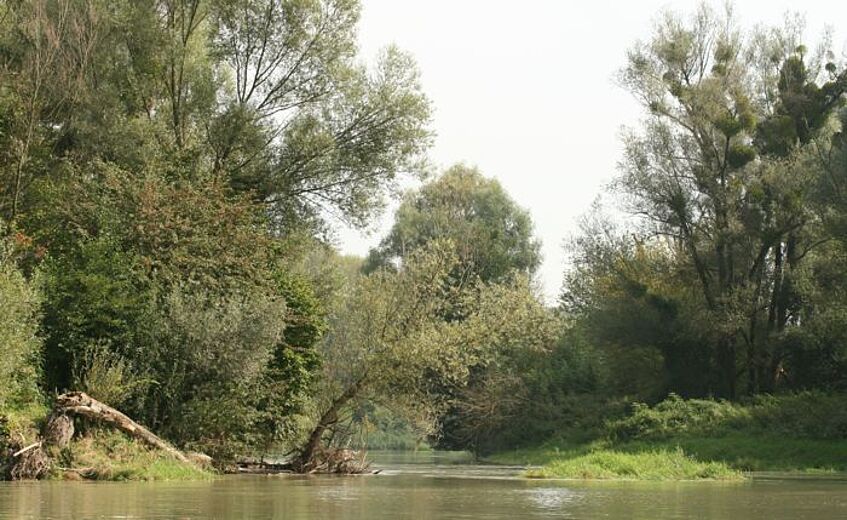At the crossroads of mountain and lowland streams

Handwritten manuscript by Reissek, c. 1860

Inside the riparian forest (photo: L. Schratt-Ehrendorfer)
At the crossroads of mountain and lowland streams
Whereas the Danube near Vienna is in its middle course and thus exhibits features of a mountain river, the lower course of the March has the hydrological characters of eastern central European lowland rivers. This offers the rare opportunity to comparatively study these very different alluvial systems within the larger biosphere unit of the Pannonian plains.
It may be hard to believe, but it is true that until the end of the 20th century no publication on the vascular plant flora along the Danube has been available. On the basis of a floristic documentation of the area between Eckartsau and Hainburg (Lower Austria) at present a comprehensive study on the area between Vienna and Bratislava is undertaken. Particular attention is given to the ecological position of all species and their connection to the altered plant associations. A comparison of present conditions with former conditions is made possible by the availability of data predating the Danube regulation in the form of an hand-written unpublished manuscript (Reissek, c. 1860; scientifically edited in collaboration with Prof. C. Riedl-Dorn and Dr. D. Rotter at the Natural History Museum Vienna), an invaluable source that has been carefully and with a lot of effort transcribed. This comparison shows that a number of species centered in montane alluvia (Hippophae rhamnoides, Myricaria germanica, Salix eleagnos, Selaginella helvetica, Typha minima, etc.) are today either extinct or in rapid decline. Although the main reason for these changes is the reduced dynamics of the regulated alluvial system, in detail the processes of suppression and change are manifold. For instance, it has been shown that the nutrient–rich waters of the Danube have a negative impact on hydrophytes. Jointly, these data not only allow to derive causal explanations for the changes of the riparian flora and vegetation, but also to inform predictions for future developments. Relevant prognoses are regularly demanded by the administration of the National Park Donau–Auen in order to evaluate the consequences of various management strategies.
The results of our research are used for various aspects of conservation purposes and for semipopular publications directed towards a broader range of readers.
Selected Publications
- Rotter D, Riedl-Dorn C, Zsak K, Schratt-Ehrendorfer L (2018) Die Typha-Arten der Donauauen Wiens und Niederösterreichs vor und nach der Donauregulierung: Eine Vorschau auf die wissenschaftliche Gesamtbearbeitung des Manuskripts von Siegfried Reissek (circa 1860). Neilreichia 9: 161–176
- Schratt-Ehrendorfer L (2000) Historischer und aktueller Zustand von Trockenstandorten (= Heißländen) in den Donauauen bei Wien (Untere Lobau). Verhandlungen der Zoologisch-Botanischen Gesellschaft Österreich 137: 127–135
- Schratt-Ehrendorfer L (1999) Geobotanisch-ökologische Untersuchungen zum Indikatorwert von Wasserpflanzen und ihren Gesellschaften in Donaualtwässern bei Wien. Stapfia 64: 23–161
- Schratt-Ehrendorfer L (1999) Zur Flora und Vegetation des Österreichischen March- und Thaya-Tales. in: Fließende Grenzen. Lebensraum March–Thaya–Auen: 181–202. Wien, Umweltbundesamt
- Schratt-Ehrendorfer L (1999) Entwicklungstendenzen von Vegetationseinheiten an Sonderstandorten der Donauauen bei Wien (Lobau). Verhandlungen der Zoologisch-Botanischen Gesellschaft Österreich 137: 137–145
- Rotter D (1999) Die Verlandungsdynamik der Donauauen südöstlich von Wien. Stapfia 64: 163–208
